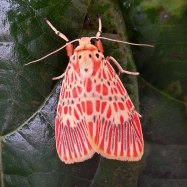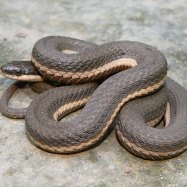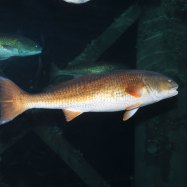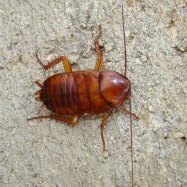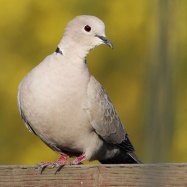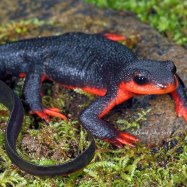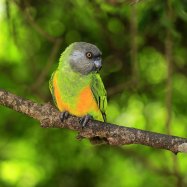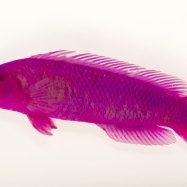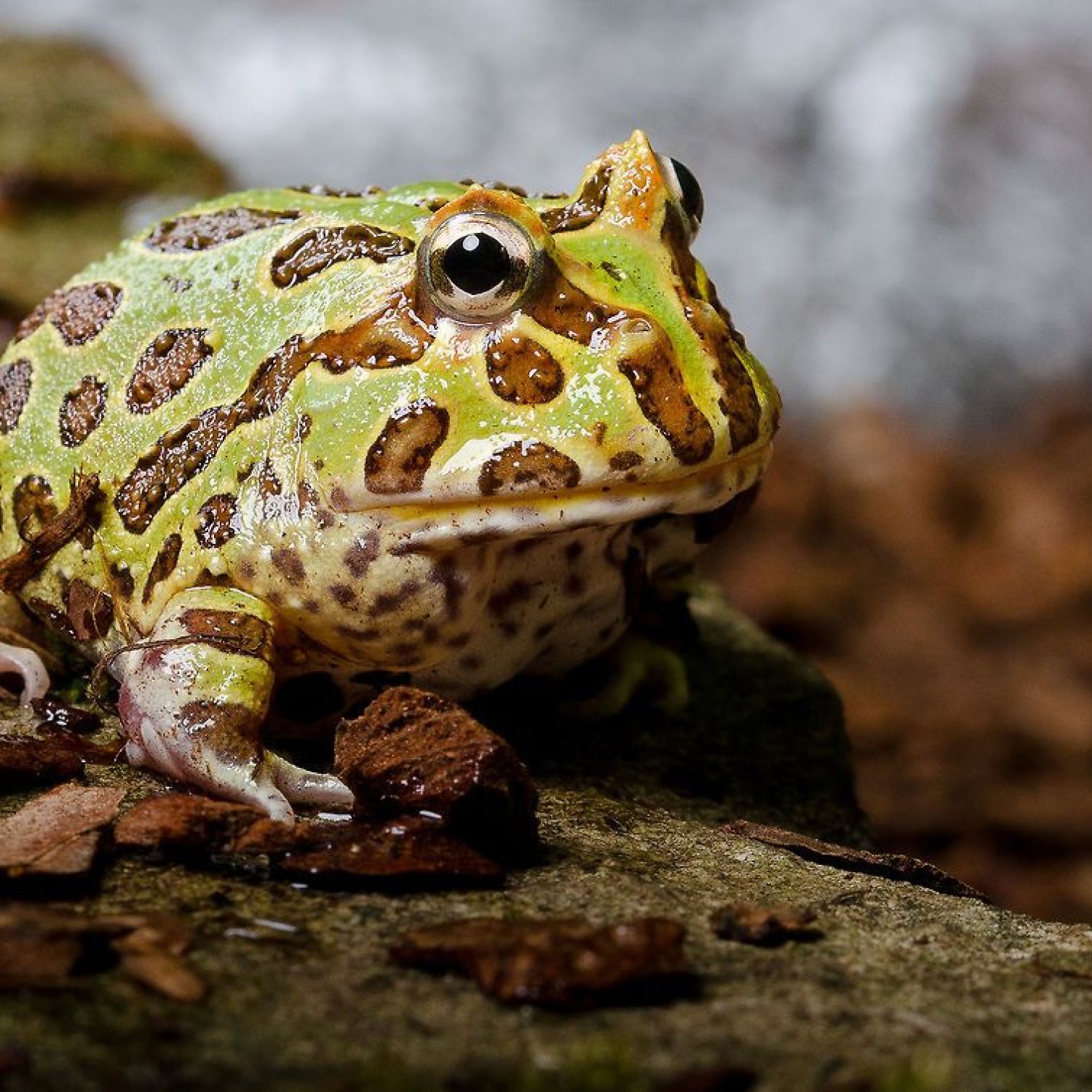
Argentine Horned Frog
Up to 6 inches (15 cm)
The Argentine Horned Frog, also known as the Pacman Frog, can grow up to 6 inches in length and is found in South America. Its stocky and round body, large mouth, and short limbs make it a unique creature. Belonging to the Ceratophryidae family, it is a popular pet among frog enthusiasts. #Argentina #HornedFrog #PacmanFrog #SouthAmerica #PetFrog
Animal Details Summary:
Common Name: Argentine Horned Frog
Kingdom: Animalia
Habitat: Tropical and subtropical forests, grasslands, swamps
The Fierce and Fascinating Argentine Horned Frog
The mesmerizing beauty of nature never fails to surprise us with its diverse and unique creations. One such majestic creature is the Argentine Horned Frog, scientifically known as Ceratophrys ornata. This amphibian species, also commonly known as the Argentine Wide-mouthed Frog or the Ornate Horned Frog, is a true marvel of South America.Found in tropical and subtropical forests, grasslands, and swamps of Argentina, Uruguay, Brazil, and Paraguay, the Argentine Horned Frog is a sight to behold Argentine Horned Frog. Its striking appearance and interesting feeding method make it a fascinating creature to study. In this article, we will dive deep into the world of the Argentine Horned Frog, exploring its characteristics, habitat, and behavior.
The Science Behind the Name
The Argentine Horned Frog belongs to the kingdom Animalia and phylum Chordata, class Amphibia. It is a part of the order Anura, which includes all frog and toad species. The family of this unique creature is Ceratophryidae, which is a group of about 50 species of horned frogs.Its scientific name, Ceratophrys ornata, breaks down to "cerato" meaning horned, "phryne" meaning toad, and "ornatus" meaning decorated. This accurately describes the horned appearance and decorated coloration of the Argentine Horned Frog.
A Killer's Feeding Method
One of the most interesting facts about the Argentine Horned Frog is its feeding method. It is a sit-and-wait predator, meaning it patiently waits for its prey to come close enough to ambush Anteater. It has a large mouth and is known to consume a variety of prey, including insects, small reptiles, and even other frogs.The ambush tactic of the Argentine Horned Frog is aided by its unique body shape. It has a stocky and round body with short, powerful limbs, making it an efficient hunter. Its powerful jaws and specialized tongue allow it to catch and swallow its prey in one swift motion.
Home Sweet Home
The Argentine Horned Frog resides in various habitats, including tropical and subtropical forests, grasslands, and swamps. It prefers areas with suitable hiding spots, such as logs, rocks, and vegetation, as it relies on camouflage to avoid detection by predators.These frogs also thrive in wetlands, where they can hide among the plants and ambush their prey. The warm and humid climate of South America is ideal for their survival and reproductive success.
South American Origins
The Argentine Horned Frog is native to South America, specifically Argentina. It is also found in other neighboring countries like Uruguay, Brazil, and Paraguay. In Argentina, it can be found in various provinces, including Buenos Aires, Entre Rios, and Corrientes.Argentina, known for its diverse landscape and rich biodiversity, has always been home to this unique creature. Its presence in other South American countries also adds to the significance of the Argentine Horned Frog in the region.
A Colorful and Camouflaged Creature
The Argentine Horned Frog displays a stunning array of colors, including green, brown, and yellow-brown. These colors often blend in with its surroundings, allowing it to hide from predators and surprise its prey. Some individuals may also have blotches or stripes on their bodies, adding to their unique appearance.The colors and patterns on the skin of the Argentine Horned Frog serve as a form of camouflage, making it difficult for predators to spot them in their natural habitat. This defense mechanism is essential for their survival, as they are highly sought-after prey for many predators in their ecosystem.
Size Doesn't Matter
The Argentine Horned Frog may not be the biggest amphibian in the world, but it sure is a mighty one. On average, an adult Horned Frog can range from 3 to 6 inches (7.6 to 15 cm) in length. Male frogs are usually smaller than females, with a characteristic callused area on their thumbs used for courtship.Despite their relatively small size, these frogs are apex predators in their ecosystem. Their strong jaws and sharp teeth allow them to defend themselves against predators and catch prey much larger than themselves.
Surviving the Threats
Fortunately, the Argentine Horned Frog is not listed as an endangered species. Its population is considered to be of least concern, thanks to its widespread distribution in different South American countries. However, like many other animals, it still faces certain threats in its natural habitat.Loss of habitat due to human activities and pollution is a significant threat to the Argentine Horned Frog. The introduction of non-native species can also disturb its natural ecosystem. Conservation efforts, such as habitat protection and promoting awareness among the local communities, are essential for its survival in the long run.
The Wonders of the Argentine Horned Frog Unveiled
The Argentine Horned Frog is a stunning creature that continues to amaze us with its unique characteristics and adaptations. Its appearance, feeding method, habitat, and origin make it an essential part of the South American ecosystem. Despite facing certain threats, the Argentine Horned Frog continues to thrive in its natural habitat and remains an important indicator of a healthy environment.As we continue to explore the mysteries of nature, the Argentine Horned Frog stands out as one of the most fascinating and awe-inspiring creatures, reminding us of the beauty and diversity of our planet. Let us continue to appreciate and protect this majestic amphibian, ensuring its survival for generations to come.

Argentine Horned Frog
Animal Details Argentine Horned Frog - Scientific Name: Ceratophrys ornata
- Category: Animals A
- Scientific Name: Ceratophrys ornata
- Common Name: Argentine Horned Frog
- Kingdom: Animalia
- Phylum: Chordata
- Class: Amphibia
- Order: Anura
- Family: Ceratophryidae
- Habitat: Tropical and subtropical forests, grasslands, swamps
- Feeding Method: Sit-and-wait predator, ambushes its prey
- Geographical Distribution: Argentina, Uruguay, Brazil, and Paraguay
- Country of Origin: Argentina
- Location: South America
- Animal Coloration: Green, brown, or yellow-brown, often with blotches or stripes
- Body Shape: Stocky and round body, large mouth, short limbs
- Length: Up to 6 inches (15 cm)
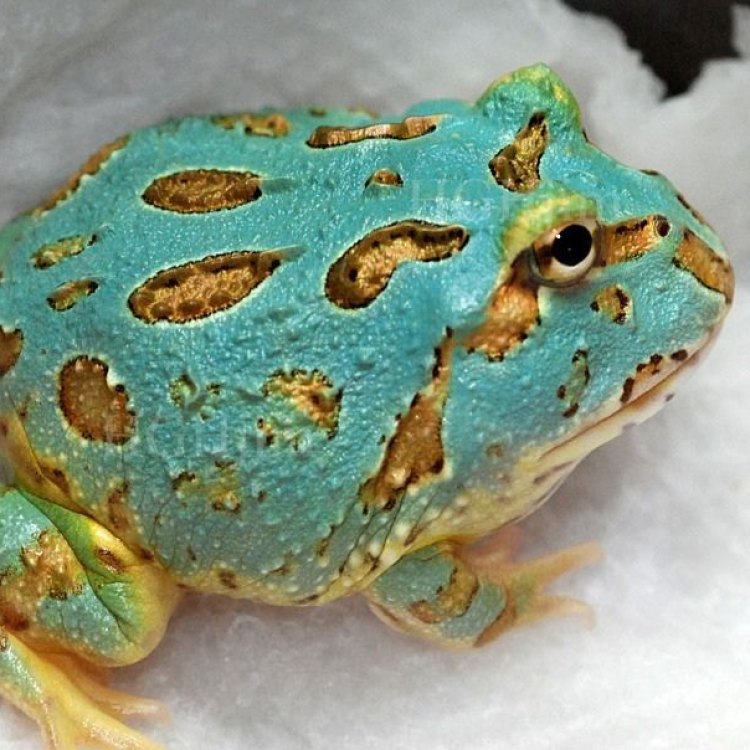
Argentine Horned Frog
- Adult Size: Medium-sized
- Average Lifespan: Up to 15 years in captivity
- Reproduction: Sexual
- Reproductive Behavior: Males call to attract females and engage in amplexus
- Sound or Call: Loud croaking sound
- Migration Pattern: Non-migratory
- Social Groups: Solitary
- Behavior: Nocturnal, burrows in the ground, aggressive feeding behavior
- Threats: Habitat loss, pollution, and pet trade
- Conservation Status: Least Concern
- Impact on Ecosystem: Top predator, helps control populations of insects and small vertebrates
- Human Use: Kept as pets
- Distinctive Features: Large size, horn-like projections above its eyes
- Interesting Facts: Can swallow prey larger than its own body size
- Predator: Snakes, birds, small mammals
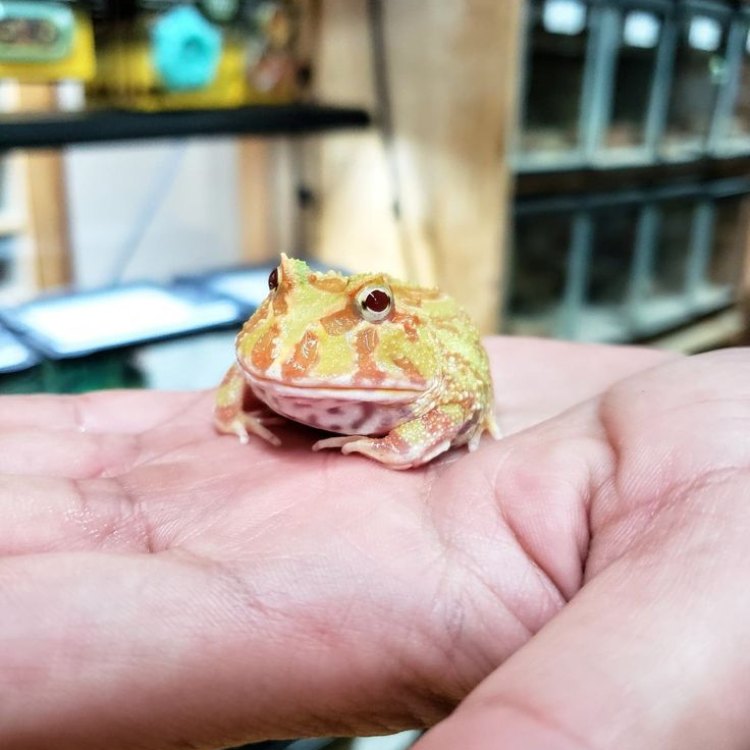
Ceratophrys ornata
The Amazing World of the Argentine Horned Frog
Imagine walking through a lush green forest, surrounded by the sounds of nature. You come across a small pond, and to your surprise, you see a large frog sitting on the edge, staring back at you with its intense yellow eyes. The frog has horn-like projections above its eyes, giving it a fierce appearance. This is the Argentine Horned Frog, a unique and fascinating amphibian found in South America PeaceOfAnimals.Com. Let's dive into the world of this extraordinary creature and discover its distinct features and behaviors.The Argentine Horned Frog, also known as the Argentine Wide-Mouthed Frog or Pac-Man Frog, is a medium-sized amphibian that is native to Argentina, Uruguay, and Brazil. It is a popular pet among amphibian enthusiasts due to its large size and unique appearance. Let's take a closer look at what makes this frog so special.
Adult Size:
The Argentine Horned Frog is a medium-sized frog, with males reaching a size of about 6 inches, and females being slightly larger. In terms of weight, they can range from 4 ounces to about a pound. They are known for their plump, round bodies and their wide mouths, which give them a comical appearance.
Average Lifespan:
In the wild, the Argentine Horned Frog can live up to 10 years. However, in captivity, they have been known to live up to 15 years with proper care Axolotl. This is a relatively long lifespan for an amphibian, making them a long-term commitment for those looking to keep them as pets.
Reproduction:
The Argentine Horned Frog follows the traditional sexual reproduction process, where the male fertilizes the eggs laid by the female. In the wild, breeding usually occurs after a heavy rain, but in captivity, it can be induced by adjusting the temperature and humidity of their enclosure.
Reproductive Behavior:
Male Argentine Horned Frogs have a unique way of attracting females. They produce a loud croaking sound, similar to that of a dog barking, to announce their presence and to attract females. Once a female is enticed, the male will engage in amplexus, where he holds onto the female's back to fertilize her eggs as she lays them. This behavior can last anywhere from a few hours to a few days.
Sound or Call:
The croaking sound made by the male Argentine Horned Frog is loud and distinct. It can be heard from a considerable distance and is often described as a “bark” or a “raspy sound.” This call is essential for breeding and also serves as a warning to other males to stay away from their territory.
Migration Pattern:
Unlike some species of frogs that migrate to different locations, the Argentine Horned Frog is non-migratory. They tend to stay in the same area as long as their habitat provides enough food and shelter.
Social Groups:
The Argentine Horned Frog is a solitary creature and does not live in groups or colonies. They are known to be territorial and will defend their territory from other frogs, except for during the breeding season when males and females come together.
Behavior:
The Argentine Horned Frog is a nocturnal creature, meaning it is most active at night. They spend most of their time burrowing in the ground, waiting for their prey to pass by. When hunting, they use their powerful jaws to catch their prey, and they are known for their aggressive feeding behavior. This means they will eat anything that can fit into their mouths, including insects, small vertebrates, and even other frogs.
Threats:
One of the main threats to the Argentine Horned Frog is habitat loss due to deforestation and urbanization. Pollution is also a concern, as it can negatively impact the water supply that these frogs rely on. Additionally, they are often captured and kept as pets, which can have an impact on their wild populations.
Conservation Status:
Fortunately, the Argentine Horned Frog is listed as Least Concern by the International Union for Conservation of Nature (IUCN). This means that their populations are stable and not facing any major threats at the moment. However, conservation efforts are still necessary to ensure their survival, especially with the ongoing destruction of their habitats.
Impact on Ecosystem:
As a top predator, the Argentine Horned Frog plays an essential role in the ecosystem. They help control insect populations, such as mosquitoes, and also regulate the number of small vertebrates in their habitat. This balance is crucial for the overall health of the ecosystem.
Human Use:
The Argentine Horned Frog is primarily kept as a pet in the exotic pet trade. However, it is essential to note that they are wild animals and require specific care to thrive in captivity. They need a large, well-maintained enclosure with proper heating and humidity levels, as well as a diverse diet to remain healthy.
Distinctive Features:
One of the most striking features of the Argentine Horned Frog is the horn-like projections above its eyes. These projections are made of cartilage and serve as a defense mechanism, making them appear more intimidating to potential predators. They also have a large, wide mouth, perfect for catching and eating their prey. Their eyes are also a distinguishing feature, with their intense yellow color.
Interesting Facts:
Aside from their distinctive physical features, the Argentine Horned Frog also has some fascinating abilities. One of the most impressive is their ability to swallow prey larger than their own body size. They have a stretchy stomach that allows them to consume larger prey, such as small rodents and even other frogs. They also have a hinged lower jaw, which allows them to open their mouth wider and swallow larger prey.
Predators:
The Argentine Horned Frog has a few natural predators, including snakes, birds, and small mammals. Luckily, their size, defensive projections, and powerful jaws make them less vulnerable to these predators.
In conclusion, the Argentine Horned Frog is a unique and fascinating amphibian with its distinctive physical features, behaviors, and abilities. While their populations are stable, it is still essential to protect these amazing creatures and their habitats to ensure their survival for future generations. Whether you encounter them in the wild or choose to keep them as pets, these Pac-Man-like creatures are undoubtedly a sight to behold.
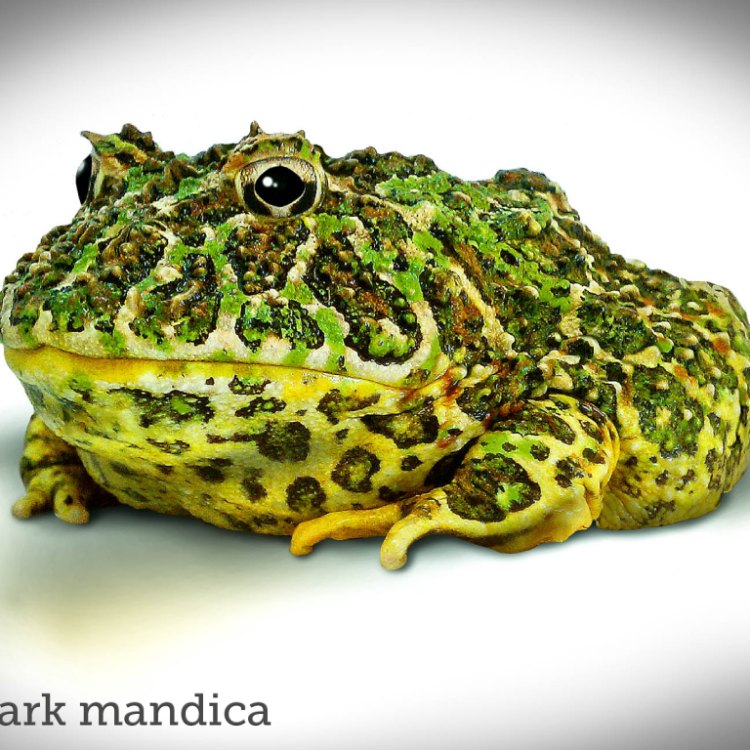
The Fierce and Fascinating Argentine Horned Frog
Disclaimer: The content provided is for informational purposes only. We cannot guarantee the accuracy of the information on this page 100%. All information provided here may change without prior notice.

